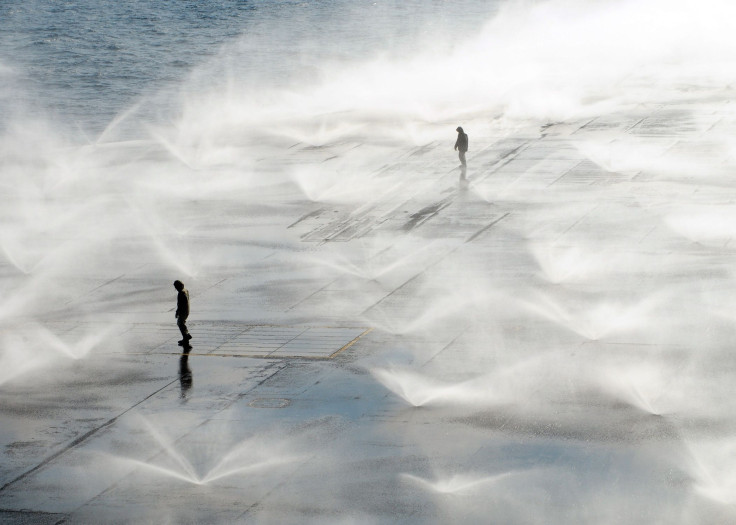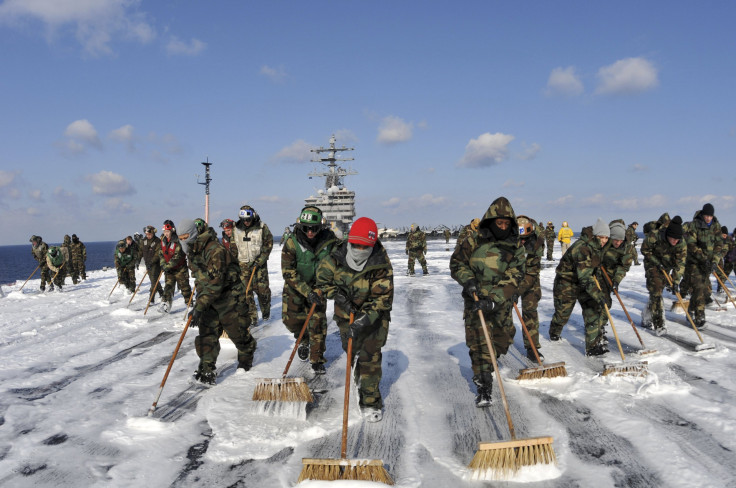USS Ronald Reagan Crew Members Sick With Cancer Three Years After Fukushima Contamination [PHOTOS]
Nearly three years after the destruction of Japan’s Fukushima Daiichi nuclear power plant, at least 70 U.S. Navy sailors who participated in relief efforts after the accident have been suffering from radiation sickness and even cancer as the crew of the USS Ronald Reagan was exposed to fallout.
“I was standing on the flight deck, and we felt this warm gust of air, and, suddenly, it was snowing,” sailor Lindsay Cooper told the New York Post in an interview published Monday. The metallic-tasting snow was caused by the freezing Pacific air that mixed with the radioactive fallout from the Fukushima power plant that was wrecked in the March 2011 earthquake and tsunami.
Fukushima was the world's worst nuclear disaster since the meltdown of the Chernobyl nuclear reactor in Ukraine in 1986. Japanese utility crews are still struggling to contain radioactive water leaking from the plant into the Pacific Ocean. It has been estimated that some 300 tons of toxic water enter the ocean each day.
“We joked about it: ‘Hey, it’s radioactive snow!’ ” Cooper said. “I took pictures and video.”
As a result of her exposure, Cooper is facing serious health problems.
“My thyroid is so out of whack that I can lose 60 to 70 pounds in one month and then gain it back the next,” said Cooper. “My menstrual cycle lasts for six months at a time, and I cannot get pregnant. It’s ruined me.”

At least half of the 70 victims are suffering from some form of cancer, said Paul Garner, a lawyer representing 51 of the crew members.
“We’re seeing leukemia, testicular cancer and unremitting gynecological bleeding requiring transfusions and other intervention,” Garner said.
The lawyer is now suing Fukushima's operator, the Tokyo Electric Power Co., for releasing a cloud of radioactive steam to relieve pressure on the plant, and dumping at least 400 tons of contaminated material a day into the North Pacific.

“We were probably floating in contaminated water without knowing it for a day and a half before we got hit by that plume,” said Cooper.
By the time the Reagan's officers found out it was contaminated, the radioactive cloud had spread too far to get away.
“And then we couldn’t go anywhere. Japan didn’t want us in port, Korea didn’t want us, Guam turned us away. We floated in the water for two and a half months,” until Thailand took them in, she said.

When conducting radiation tests on the ship, Michael Sebourn, a radiation decontamination officer, found radiation to be 300 times higher than what was considered safe on the U.S. aircraft carrier.
© Copyright IBTimes 2024. All rights reserved.












